Submitted by WA Contents
Dominique Perrault reveals details for Seoul Biennale of Architecture and Urbanism 2021
Korea, South Architecture News - Nov 09, 2020 - 11:41 14099 views
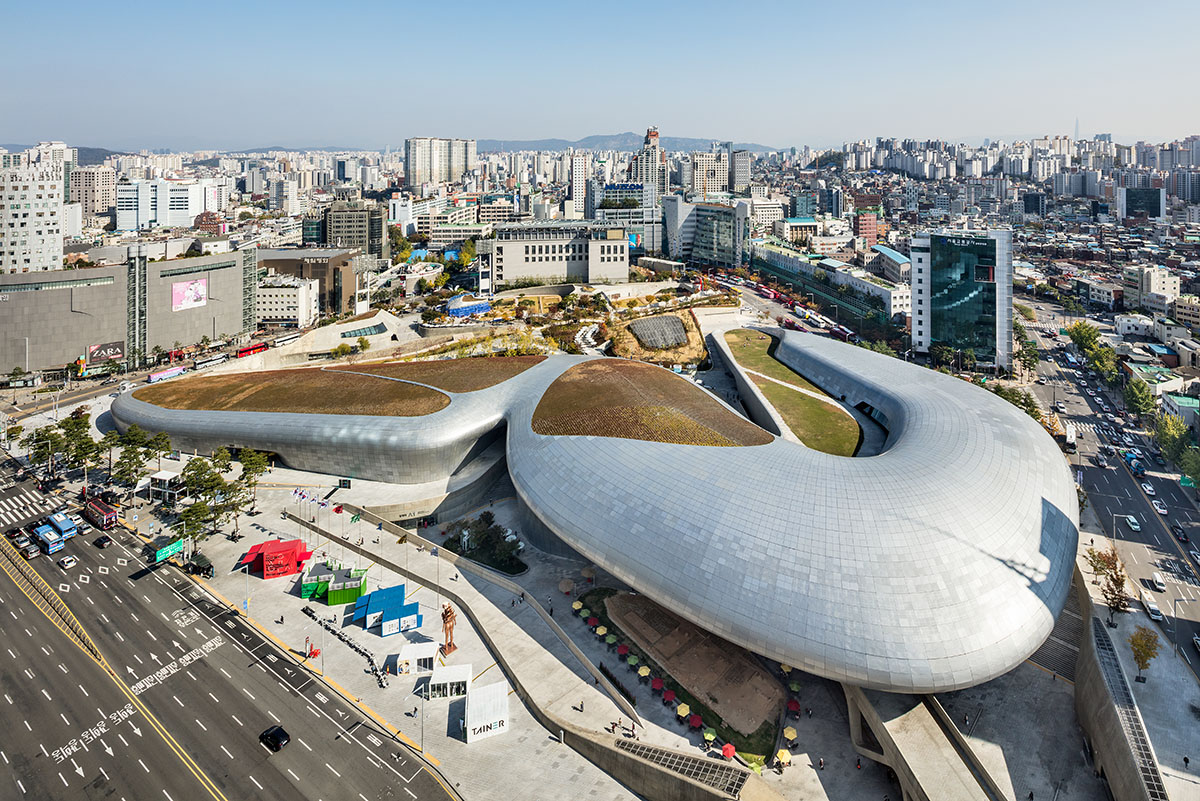
French architect and urban planner Dominique Perrault, founder and principal of Dominique Perrault Architecture, has revealed details and participants for the Seoul Biennale of Architecture and Urbanism 2021, which is themed as "CROSSROADS Building the Resilient City", aiming to converge in their intention to promote more responsible and citizen-focused urban growth.
Announced in a press meeting on October 29th, the online pre-Biennale version brought together two parallel sets of guests and speakers, one from the Paris City Hall, the other from the Seoul Hall of Urbanism & Architecture.
The Seoul Biennale of Architecture and Urbanism will be held from September 16 to October 31, 2021.
Dominique Perrault is the General Director of the third edition of the Biennale. Dominique Perrault has a strong relationship with the City of Seoul, thanks notably to the construction of the Ewha Woman’s University in 2008 and more recently with the ongoing Gangnam International Transit Center, an underground infrastructure fully lit with natural light through an unprecedented glass structure dubbed the "Lightbeam".
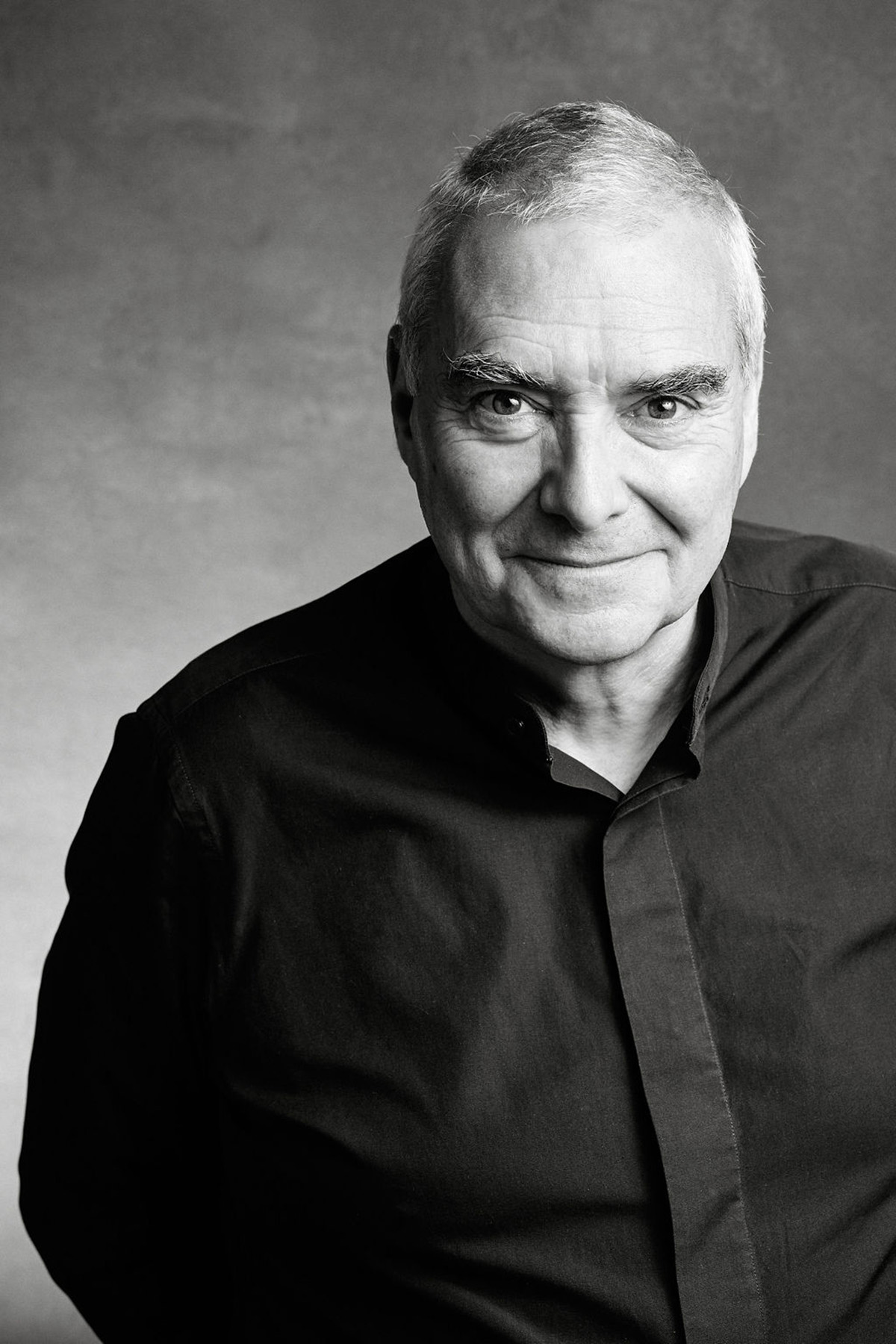
Dominique Perrault. Image © Enrique Pardo
Toyo Ito & Associates, Ahmed Hossam Saafan, David Chipperfield Architects, SANAA, Elemental, Landprocess, Bjarke Ingels Group, Kengo Kuma & Associates, Renzo Piano Building Workshop were named among contributors to SBAU2021.
After a first round, the jury shortlisted 117 proposals from all over the world and a second jury will refine this selection in order to finalize the list of selected participants at the end of 2020.
Dominique Perrault previously spoke to WAC's editor-in-chief Berrin Chatzi Chousein as part of WAC's Live Interview Series. You can watch Dominique Perrault's live interview on WAC's IGTV.
You can watch the online pre-Biennale version below.
The SBAU2021 is intended to highlight Seoul’s architectural effervescence and to become an international showcase for the world’s cities.
Following the first two editions entitled “Imminent Commons” (2017) and “Collective City” (2019), the third edition entitled "CROSSROADS Building the Resilient City" will explore the evolution of the world’s cities and metropolises.
While some 50 cities were represented in 2017, then 85 in 2019, Seoul hopes to welcome in 2021 the contributions of more than a hundred cities from the five continents.
Echoing the dynamics of urban planning, the SBAU2021 will gather participants representing a broad range of expertise: architects and urban planners, representatives from cities and metropolises, but also experts in science, engineering, humanities, artists, academics or students. Using a wind rose as its symbol, SBAU2021 will seek to develop a forward-looking vision of the city of tomorrow.
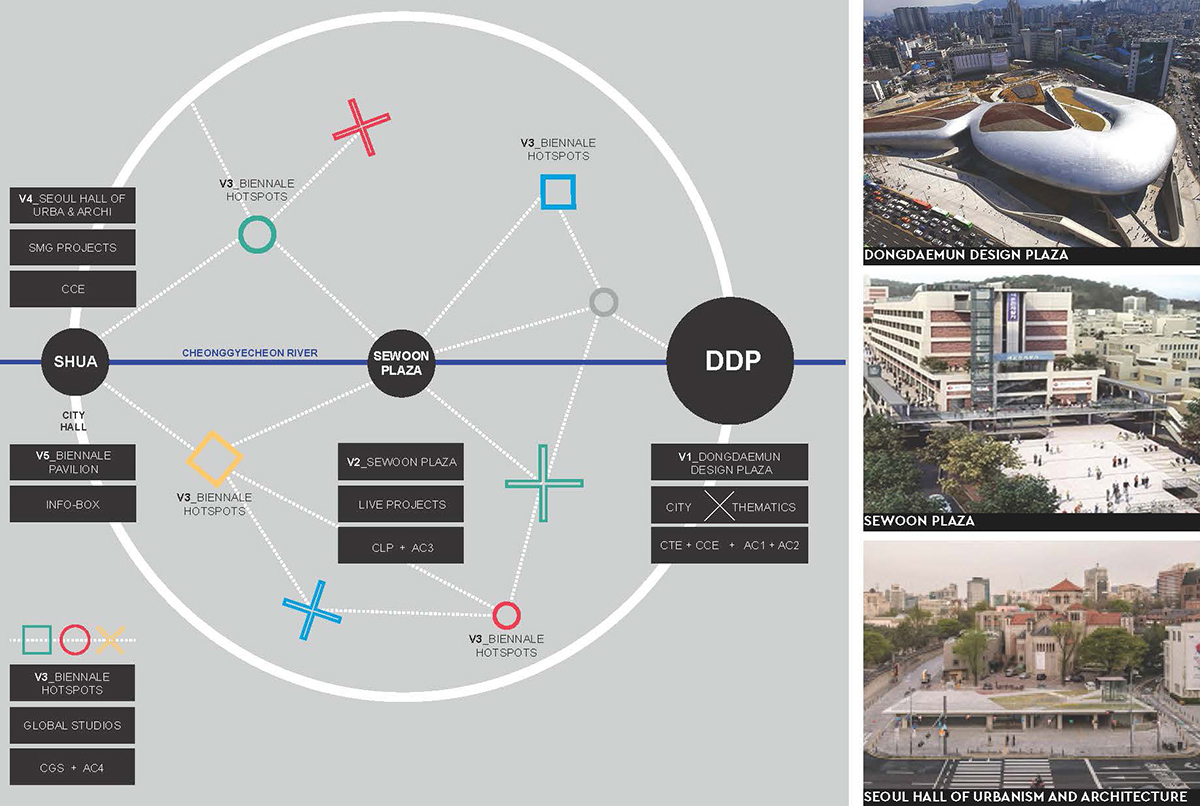
Venues. Image © Seoul Biennale of Architecture and Urbanism 2021
The Seoul Biennale of Architecture and Urbanism 2021 (SBAU2021) will be the first international architectural event produced in the aftermath of a pandemic that is altering and challenging our lifestyles and civilization, placing cities at the heart of complex issues.
"The theme, based on action and resilience, illustrates the desire to make this event a place of convergence, considering, more than ever, the city as a collective invention," said SBAU2021.
"The Biennial intends to bring together various perspectives and skills in order to reflect on the city as a more sustainable, resilient and comfortable place for its inhabitants."
The Biennial will promote the theme of "crossroads", considering cities and metropolises as spaces of superposition, complex and constructed interactions between inhabitants, buildings, infrastructures, movements and regulations.
The SBAU2021 is divided into five thematic figures
The SBAU2021 is structured in the form of five figures, called "Crossroads", who converge in their intention to promote a more sustainable urban growth and a vision of the city as a collective invention. These five figures, thematic entry points, will be used to approach the content of the Biennale’s exhibitions.
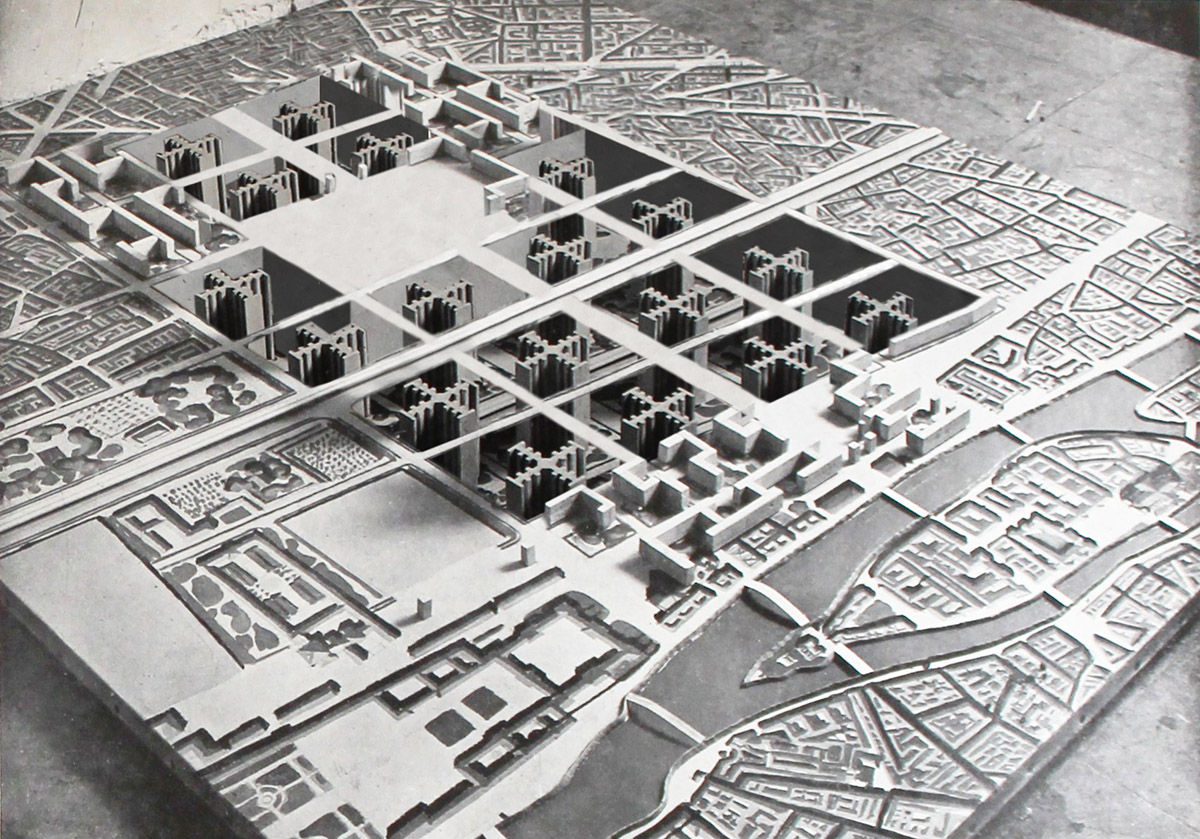
ABOVE/BELOW. Image © Seoul Biennale of Architecture and Urbanism 2021
Crossroad 1 on urbanism: ABOVE/BELOW
It will explore architectural and urban planning approaches that explore the potential interconnections between the above and below ground layers of the city: a strategy to increase city density and programmatic connections, while limiting urban sprawl.

HERITAGE / MODERN. Image © Seoul Biennale of Architecture and Urbanism 2021
Crossroad 2 on architecture: HERITAGE / MODERN
It will explore the built environment, question the notions of construction and destruction, and explore the optimization perspectives of the existing built environment.
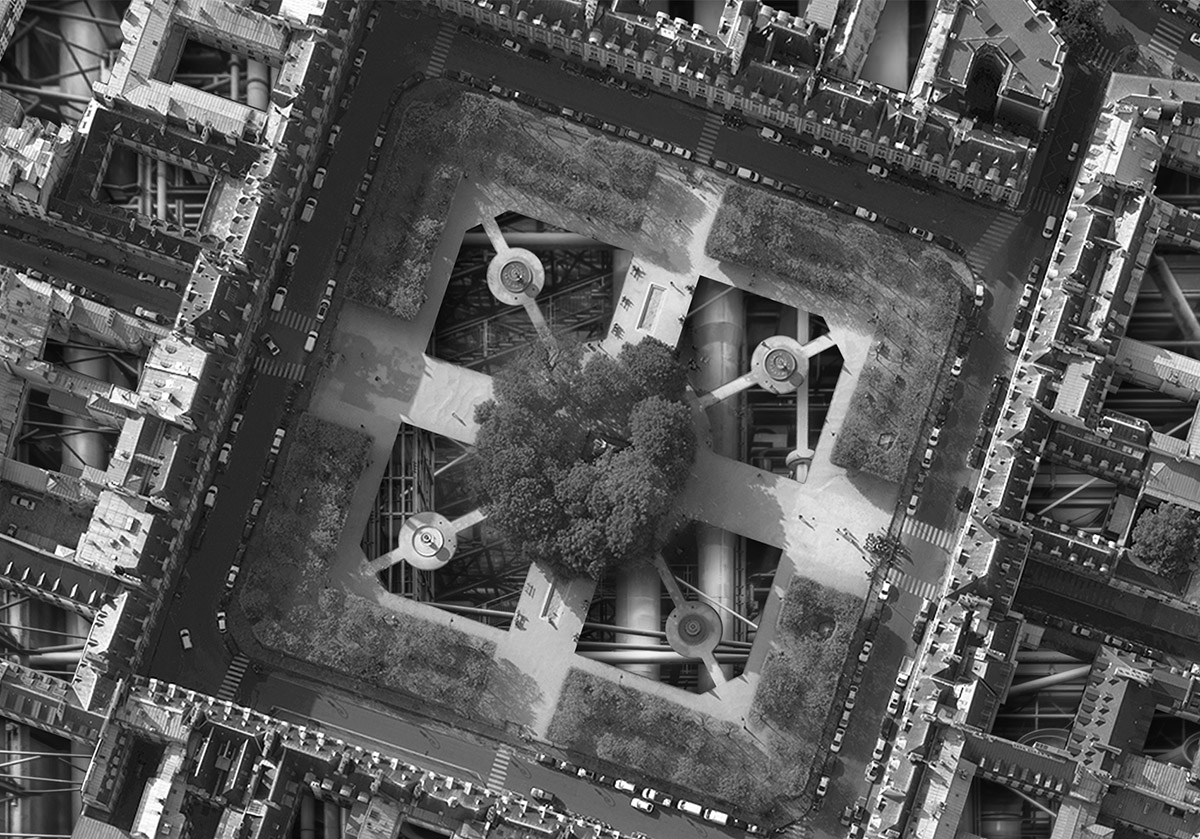
CRAFT / DIGITAL. Image © Seoul Biennale of Architecture and Urbanism 2021
Crossroad 3 on design: CRAFT / DIGITAL
The theme will consider the potential of the city as an instrument of remote production, accessible from anywhere by everyone, in contrast to traditional spaces and production methods.
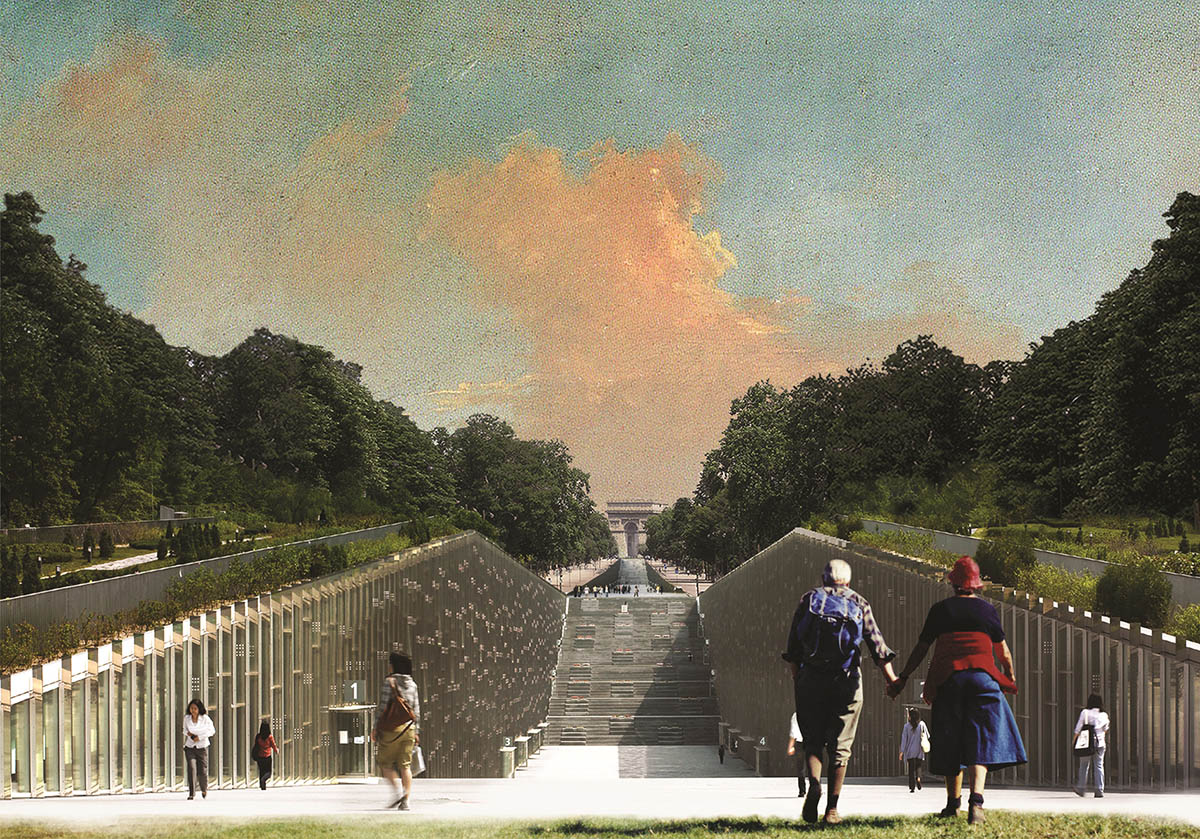
NATURAL / ARTIFICIAL. Image © Seoul Biennale of Architecture and Urbanism 2021
Crossroad 4 on landscape: NATURAL / ARTIFICIAL
The theme will examine how nature is today at the heart of the building process. It will highlight practices that give increasing importance to the harmony between the built environment and the presence of nature, whether preserved, transformed or built.
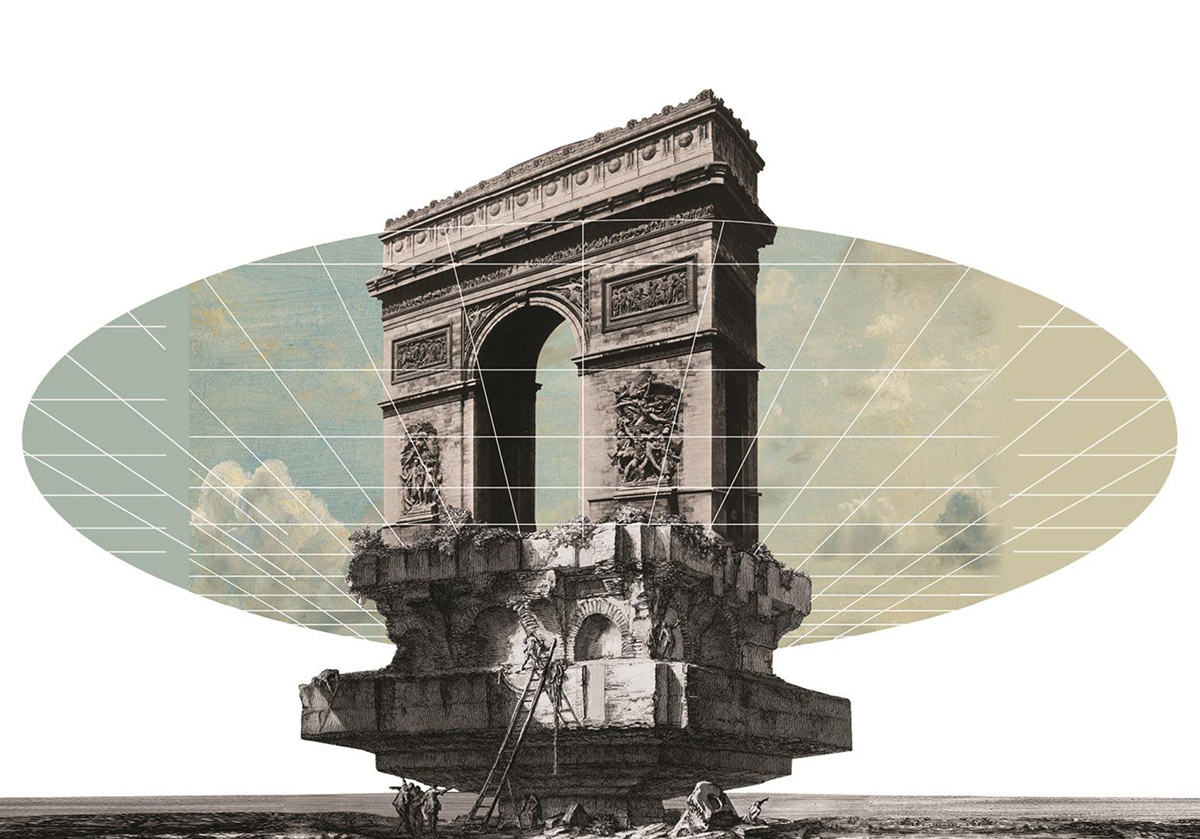
SAFE / RISK. Image © Seoul Biennale of Architecture and Urbanism 2021
Crossroad 5 on the city: SAFE / RISK
The theme will question the capacity of architecture and urban planning to adapt, transform or react to the multiple risks of the contemporary world.
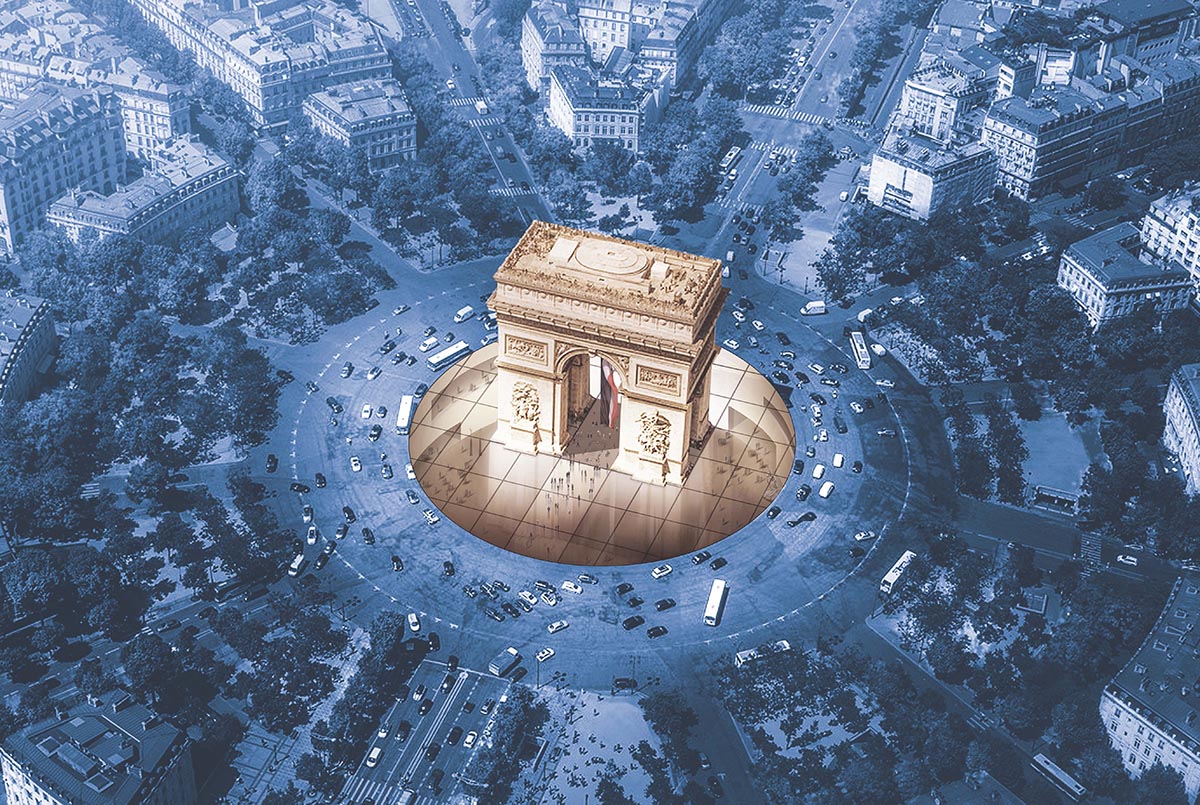
ARCHITECTURE/ INFRASTRUCTURE. Arc de Triomphe Fiction. Image © Seoul Biennale of Architecture and Urbanism 2021
To these five figures, a last one called ARCHITECTURE/ INFRASTRUCTURE will introduce the content of the "Thematic" exhibition. The exhibition will question the perceived separation between Architecture and Infrastructure: buildings usually associated with the field of architecture and the works or installations covered by the term "infrastructure".
It will argue for a fusion between architecture and infrastructure as a tool and way to create a more resilient city.
Structure of the SBAU2021
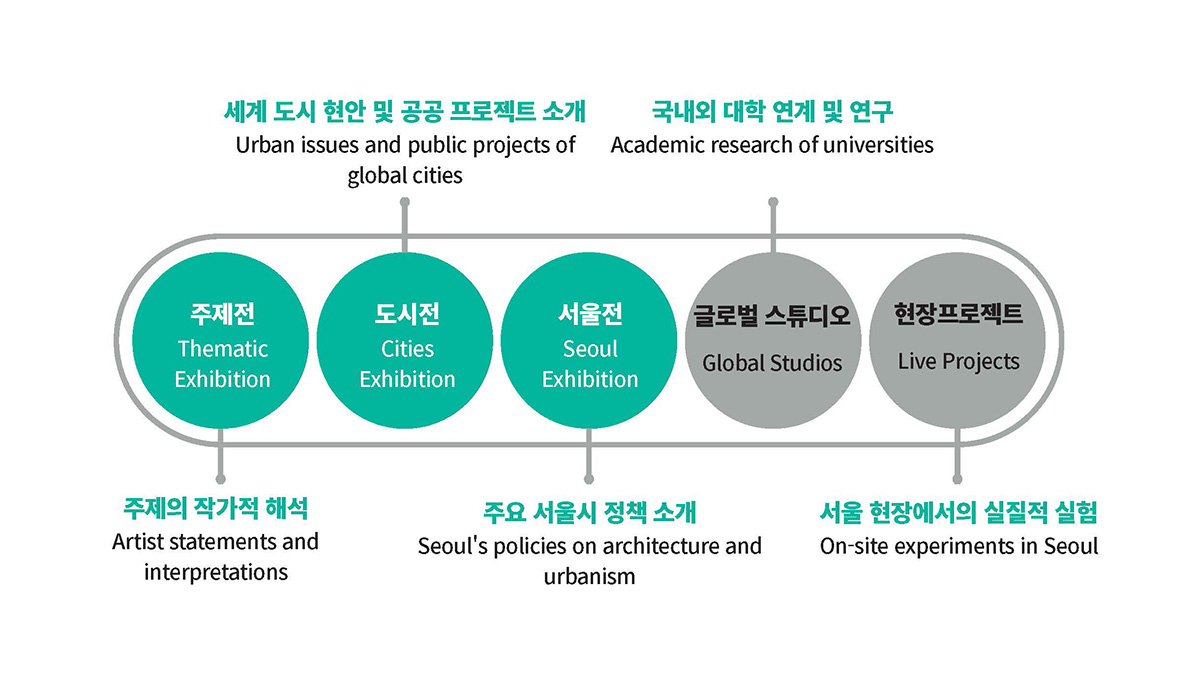
Image © Seoul Biennale of Architecture and Urbanism 2021
The SBAU2021 will have five sections, corresponding to five exhibitions, to which will be associated a series of meetings and events.
The "Thematic" and "Cities" exhibition
The exhibition will be located in the Dongdaemun Design Plaza (DDP), an emblematic building in the city of Seoul, built by Zaha Hadid Architects. These two sections will form the main exhibition of the Biennale.
A selection of guest cities will also present innovative projects in the Seoul Hall of Urbanism & Architecture (SHUA).
The "Global studios" exhibition
The exhibition will offer a space for university research. The works will be presented in the form of temporary installations in Seoul public spaces, selected through a call for projects addressed to universities around the world.
The "Seoul" exhibition will present innovative architectural and urban projects developed in the South Korean metropolis and will be held in the "Seoul Hall of Urbanism & Architecture" (SHUA).
The "Live Projects" exhibition will bring together experimental projects and public events, workshops and debates at Sewoon Plaza, halfway between the two main sites of the Biennale, the DDP and the SHUA.
Finally, a Biennale Pavilion will be created next to the Seoul City Hall, to guide visitors to the exhibitions or events of the SBAU2021.
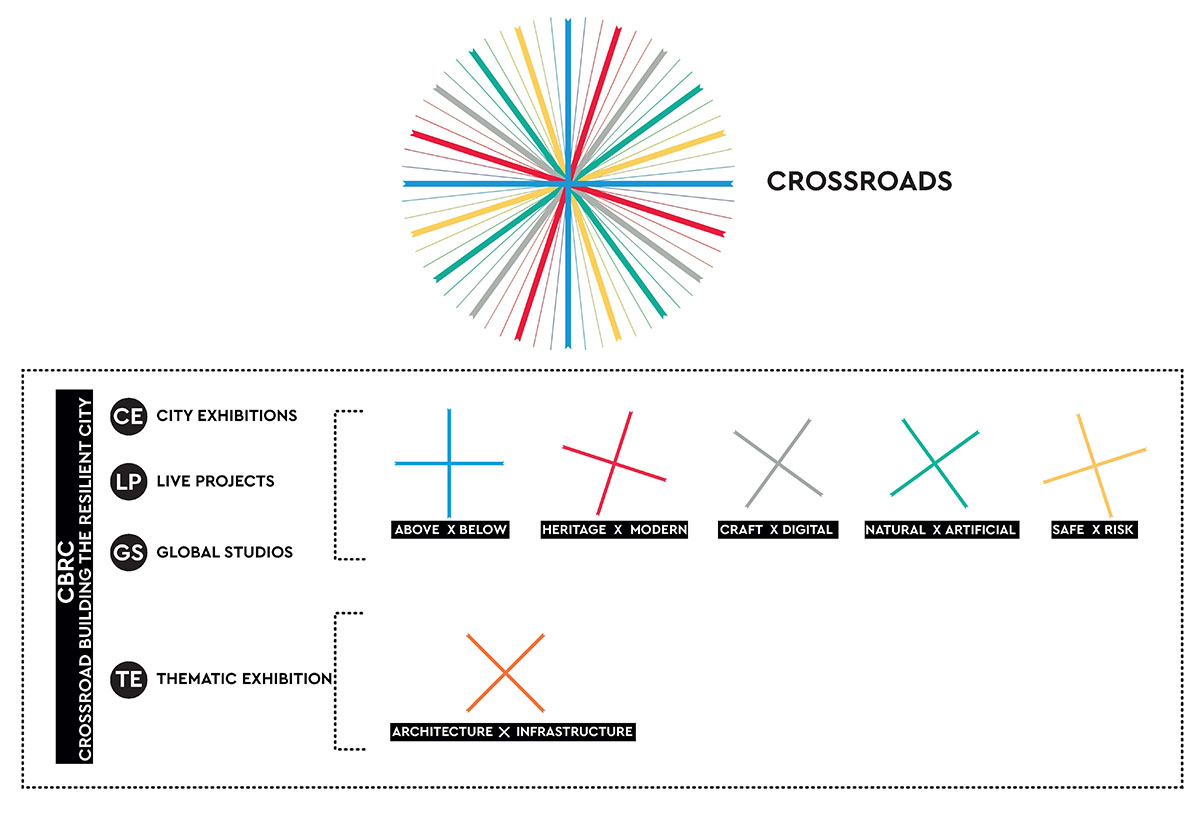
Exhibitions. Image © Seoul Biennale of Architecture and Urbanism 2021
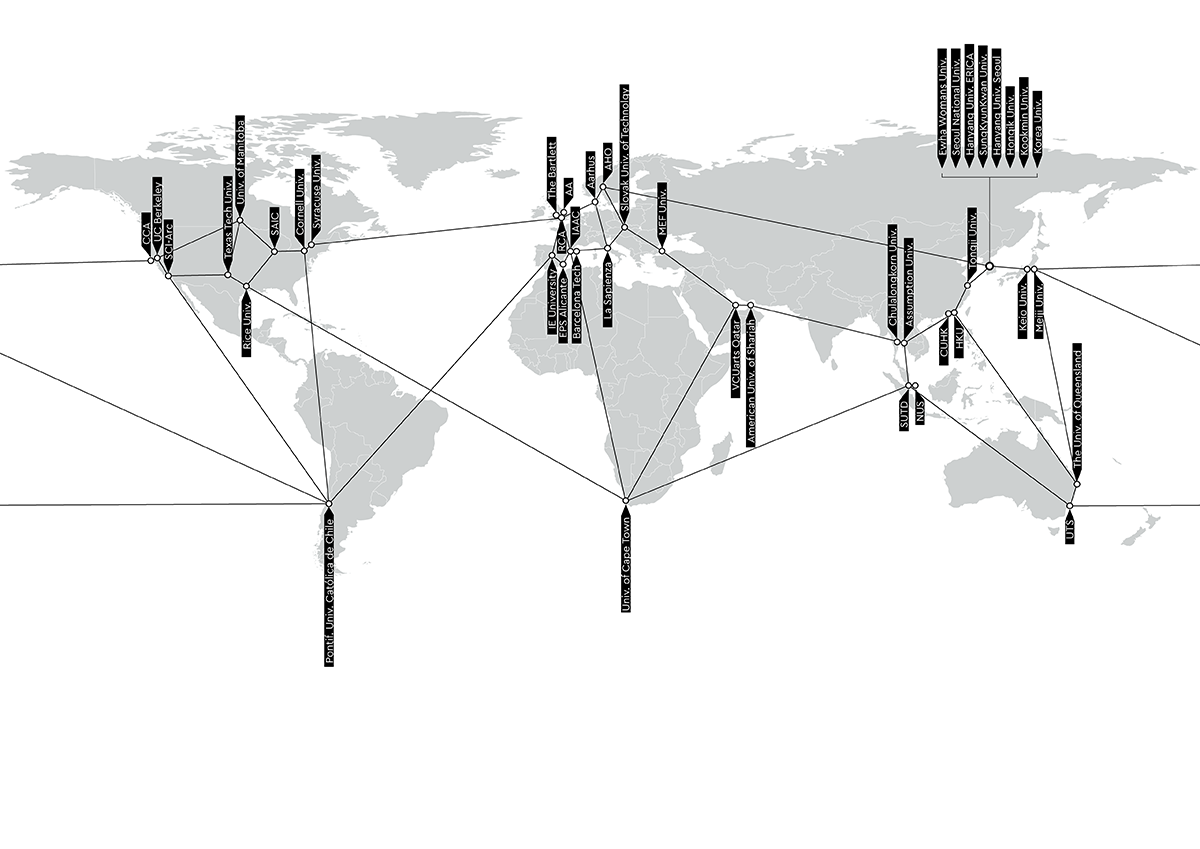
Global Studios, World Schools Map. Image © Seoul Biennale of Architecture and Urbanism 2021
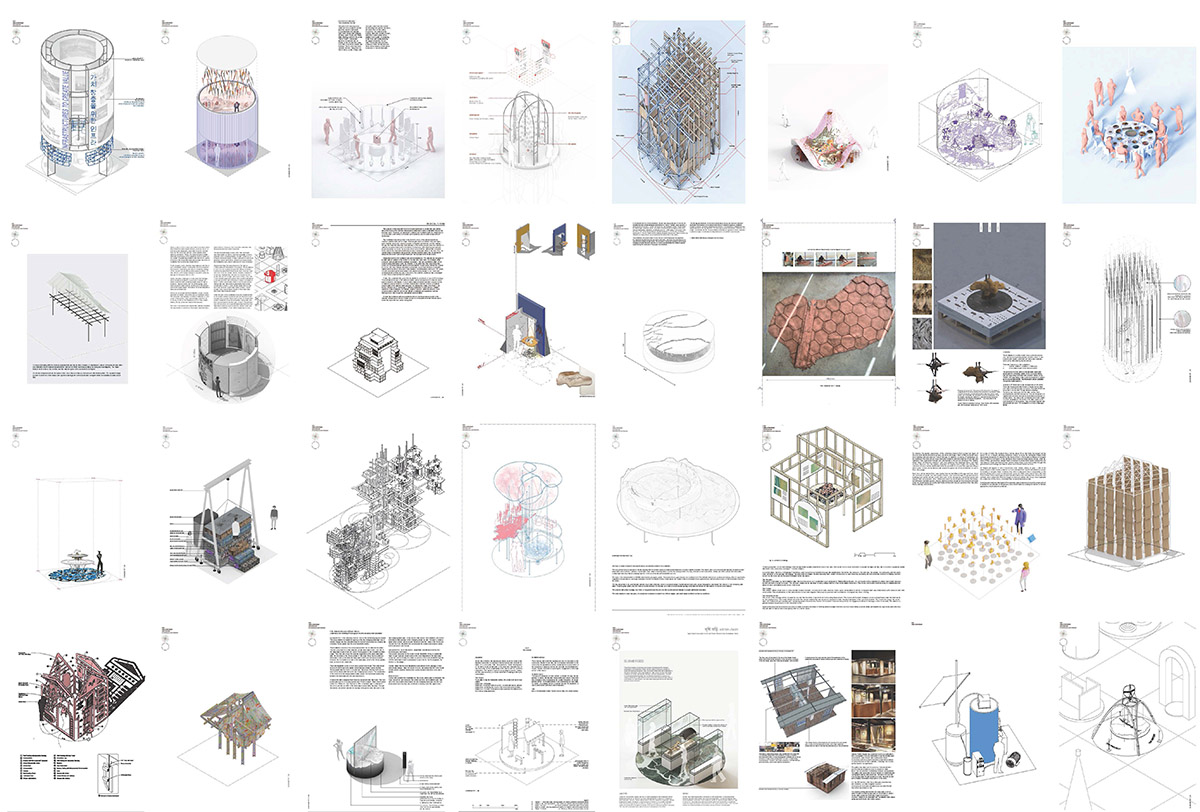
Call for Proposals entries. Image © Seoul Biennale of Architecture and Urbanism 2021
The SBAU 2021 launched a call for submissions in June this year. Out of 1433 registrations, The Biennale received 414 applications. The largest number of candatures was registered in Asia (185 nominations), followed by Europe (131 nominations).
These results certainly reflect the popularity of the Seoul Biennale in Asia, but also the way its General Director has helped to increase the event's visibility in Europe.
After a first round of the jury, 117 proposals were shortlisted. A second jury will refine this selection in order to finalize the list of selected participants at the end of 2020.
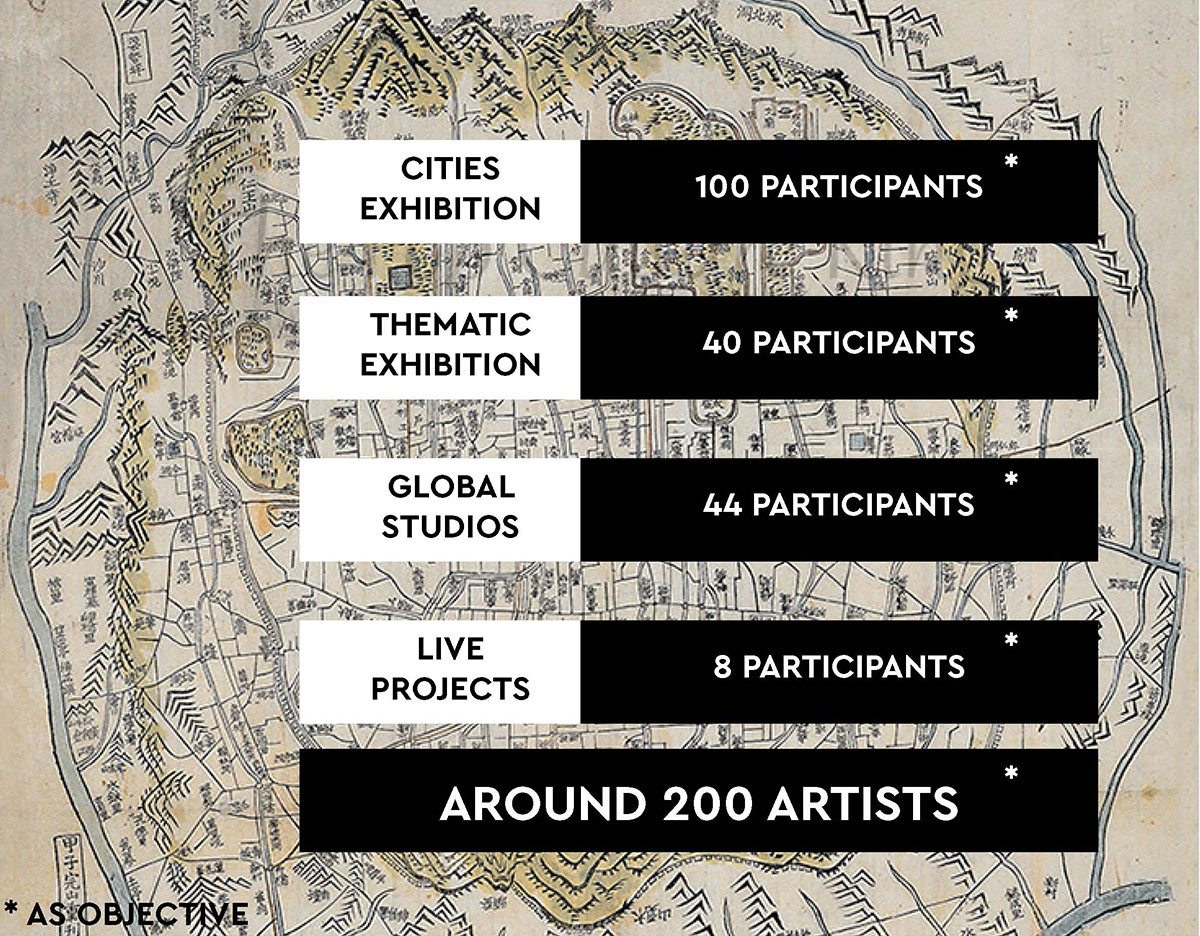
Artists target. Image © Seoul Biennale of Architecture and Urbanism 2021
The Biennale said that "in addition to this call for projects, a direct invitation selection process is also in progress. The finalized list of artists selected to participate in SBAU2021 will be announced during the first semester of 2021."
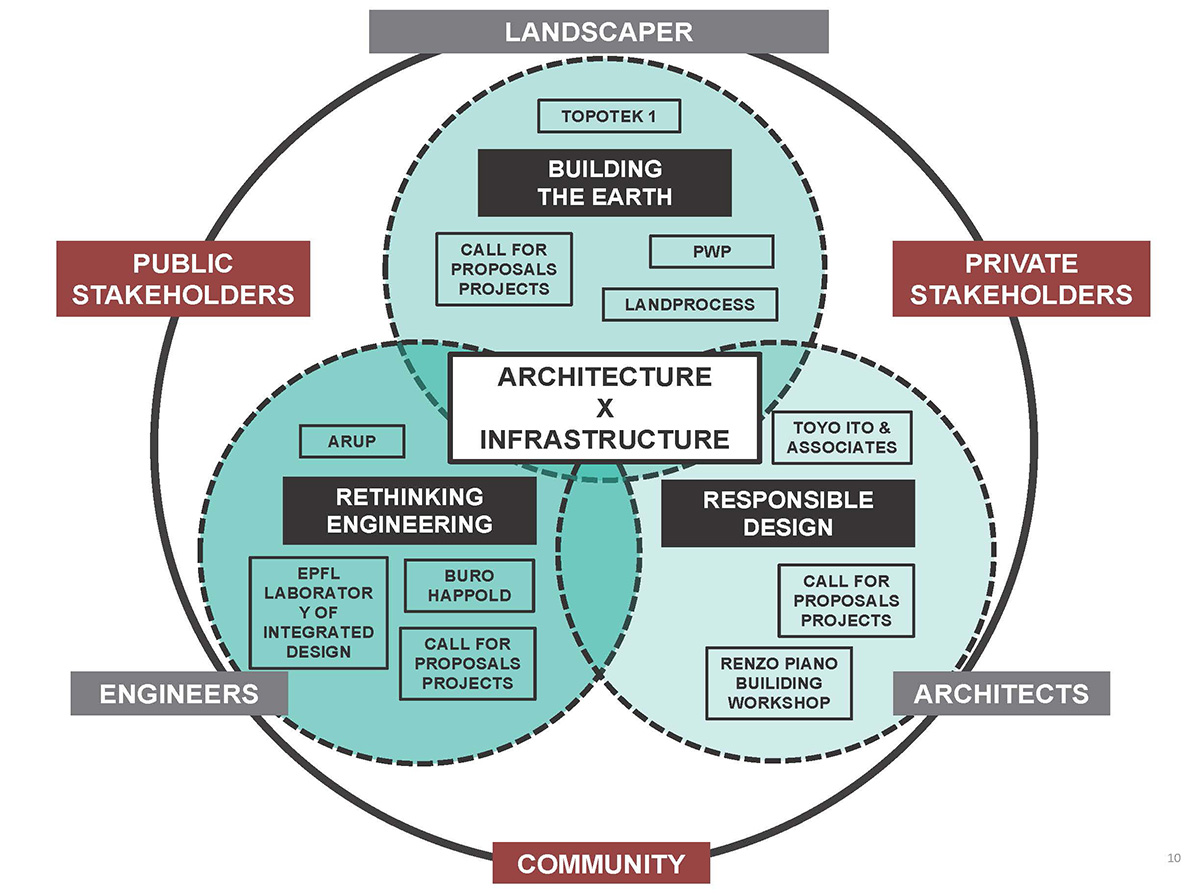
Thematic Constellation, Architecture Infrastructure. Image © Seoul Biennale of Architecture and Urbanism 2021
"Thematic" exhibition
Together with the exhibition "Cities", the "Thematic" exhibition will form the main exhibition of the SBAU2021. The exhibition will question the apparent division between the constructions usually associated with the field of architecture and the works or installations covered by the term "infrastructure".
The purpose of the SBAU2021 Thematic Exhibition is thus to question this separation and to advocate in favor of a merger between architecture and infrastructure as a way to create a more resilient city.
The thematic exhibition will therefore bring together architecture and infrastructure projects at the crossroads of contemporary questions, widening the definition of resilience, often limited to responses to climate events. The exhibition intends to express the potential for synergies between architects and engineers in the design of projects promoting flexibility, new uses or design process, creating new connections with the territories and considering obsolescence as an exciting opportunity for regeneration.
The exhibition will feature a wide variety of projects and creators, through an exhibition design in the form of "constellations", looking for a definition of the "Resilient City" under the architecture/infrastructure thematic scope.
The "Responsible Design" constellation will show the creativity and responsibility of architects and designers in the field of design. The "Building the earth" constellation will propose a vision on landscape through the work of landscape designers and urban planners.
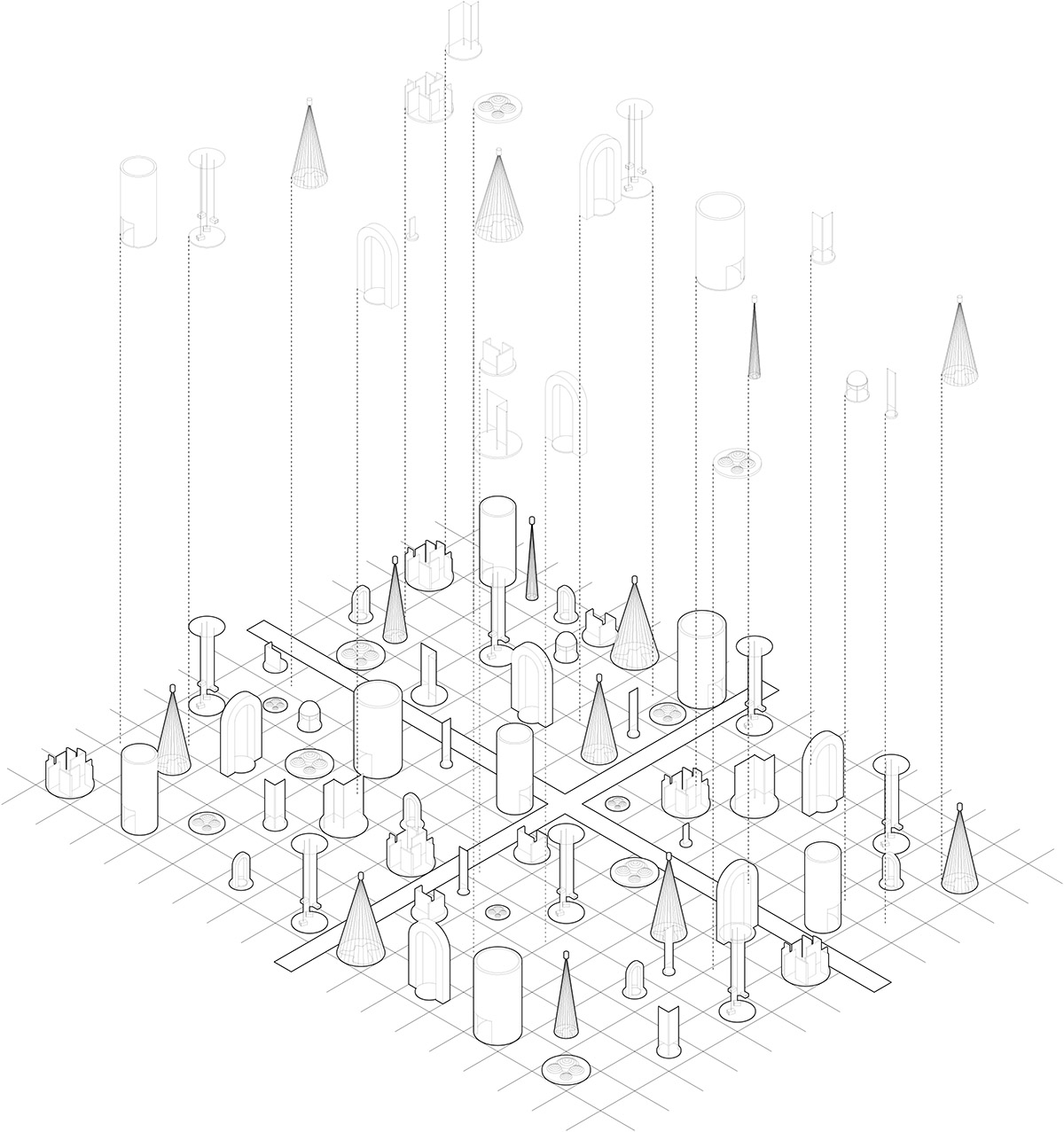
Image © Dominique Perrault Architecte/adagp
A constellation called "Rethinking engineering" will provide a space for engineering leaders, often valued as pioneers in urban resilience. Combining approaches of private or public actors, the Thematic exhibition of the Biennale wishes to bring an innovative look and vision of the city's making, oriented towards the improvement of our lifestyles and built environments.
The exhibition design designed for the floors of the Dongdaemun Design Plaza will suggest the board of a chess game, forming a kind of city, in which the squares defined by a grid will constitute the various exhibition spaces.
Each exhibition area will host a contribution. The pieces (installations) will be placed in the grid, associated with "landmarks", i.e. point facilities providing complementary services (reception, relaxation area, agora, information point, etc.).
The works selected by invitation or from the international call for proposals will be placed according to curatorial choices so as to form "thematic constellations".
Scientific Committee
For the SBAU2021, Dominique Perrault is relying on the support of a scientific committee, in charge of enriching the debates and the reflection on the Biennale’s theme.
The scientific committee is composed of experts chosen for their particular approach to the field of intervention of this event. They will have an advisory role during the event’s entire process.
The Scientific Committee composed of: Andreas Ruby, Critic and curator of the exhibitions, director of the Swiss Architecture Museum (SAM) in Basel, Haewon Shin, Architect, exhibition curator of the Korea pavilion at the 2020 Venice Architecture Biennale, Sarah M. Whiting, Architect and critic, professor of architecture at Harvard University, Winy Maas, Architect founder of the MVRDV firm, professor of architecture and urbanism at the Delft University of Technology, John Hong, Architect, professor at the University of Seoul, Francis Rambert, Journalist and critic, Director of the Département de la Création architecturale at the Cité de l’Architecture et du Patrimoine in Paris, Miquel Adrià Architecte, Directeur of the architecture journal Arquine and cultural advisor to the Mayor of Mexico City, Farrokh Derakshani, Architect, Director of the Aga Khan Award for Architecture, Yoonhie Lee, Architect, professor in the Architecture Department of Ewha Womans University, Seoul, Barry Bergdoll, Historian, specialist of modern architecture, Professor at Columbia University, New York.
Top image: Seoul Biennale of Architecture and Urbanism 2021 will hold its main exhibition at Gongdaemun Design Plaza (DDP). Image © Kyungsub Shin Studio.
